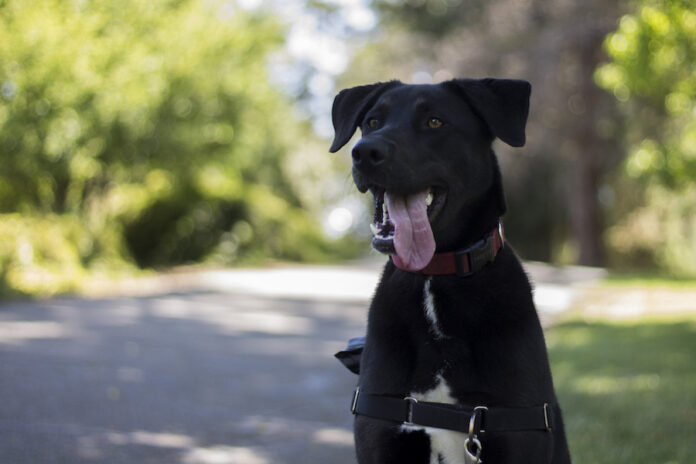Redhead furry friends get coat color from repeated segments of DNA
A new study from UC Davis researchers explores the genetic controls that make similar breeds of dogs exhibit variation in coat colors.
This study is based on gene expression. One may already be familiar with a textbook example of dog coat color in Labrador retrievers. Interactions between different versions of dominant and recessive genes result in the Labrador’s classic black, brown or yellow coat. As complex as it is, this type of genetic interaction doesn’t account for all variation in coat colors.
One breed of dog in particular had researchers stumped: the Nova Scotia Duck Tolling Retriever. Tollers, like the Labrador example, have widely different coat colors that range from light strawberry blond to deep red. However, Tollers with the same genes often show unexplained coat color variations.
This was the first hint that something else may influence coat color changes, according to the study’s lead author, Kalie Weich, who works in the UC Davis department of population health and reproduction.
“While many variants that change dog coat color have been previously identified, the variant responsible for differences in shade or intensity of coat color in red or black dogs had not been found,” Weich said via email.
Coat color derives partly from the genetic controls of yellow (pheomelanin) and black (eumelanin) pigments. Yellow and red dogs have a mutation that causes them to only express the lighter coat color genes. In the case of Tollers, the genetic code alone couldn’t fully explain the difference in coat colors.
To fetch some answers, UC Davis researchers surveyed the genomes of Tollers with varying coat colors. Genetic samples came from privately-owned dogs through the UC Davis Veterinary Medicine Teaching Hospital or directly from owners and other veterinarians. The owners provided information including the exact breed, coat color and age of their furry friend along with their dog’s saliva sample. From the collected samples, 13 dogs were Nova Scotia Duck Tolling Retrievers with a variety of coat colors and one was an Irish Setter. Researchers extracted DNA from saliva samples and sequenced the genome of each dog.
Between all of the dogs, a single area of chromosome 15 stood out. There, researchers identified a “copy number variant,” or CNV.
“A copy number variant is a piece of the genome that has been duplicated during normal cell division and then incorporated back into the genome,” Weich said. “Some CNVs include only a single copy, but this CNV can include up to four or five copies indicating that multiple duplication events may have happened.”
Dark red Tollers had around five copies of the gene, which caused dark pigmentation from the root to the tip of the hair. Lighter-colored dogs had about two genetic repeats so their fur had light roots and darker tips.
This is a novel discovery in gene expression for dogs, since the study suggests that copy number variants may be a mechanism of coat color intensity among several different breeds. Although CNVs are not the only method of controlling gene expression, Weich’s study is the first to describe this mechanism in dogs.
“Many, but not all, of the identified mutations in genes that result in color changes are either/or scenarios,” said Robert Grahn, a researcher in the UC Davis Veterinary Genetics Laboratory, via email. “[The dogs] are either black or brown, full color or dilute.”
Instead of abiding by these previously known mechanisms of genetics, the copy number variant introduces a new way of quantifying the controls behind coat color.
“The mutation identified in the current research correlates a number of copies of the gene to the intensity of the color,” Grahn said. “The more copies you have the more intense the color.”
The identification of this color-controlling factor has implications for both dog breeders and future genetic studies. This research informs dog breeders on how certain characteristics are inherited, so they have more control over choosing traits in their next litter of puppies.
“Studies like these help us to understand exactly what types of genetic changes will modify melanin pigmentation and animal coloration,” said Angelica Kallenberg, a researcher in the UC Davis Veterinary Genetics Laboratory, via email. “Dog breeders will be able to breed for a high or low copy number, if that is what they want.”
Novel discoveries about inheritance in dogs also contribute to further exploration in the field of genetics. Although genetic inheritance in dogs has been widely studied, there are still more factors at play in controlling coat color that haven’t been explored.
“There are some color differences that couldn’t be explained by this research, so that will be a really interesting direction for researchers to look into in the future,” Kallenberg said.
Written by: Lauren Glevanik — science@theaggie.org





